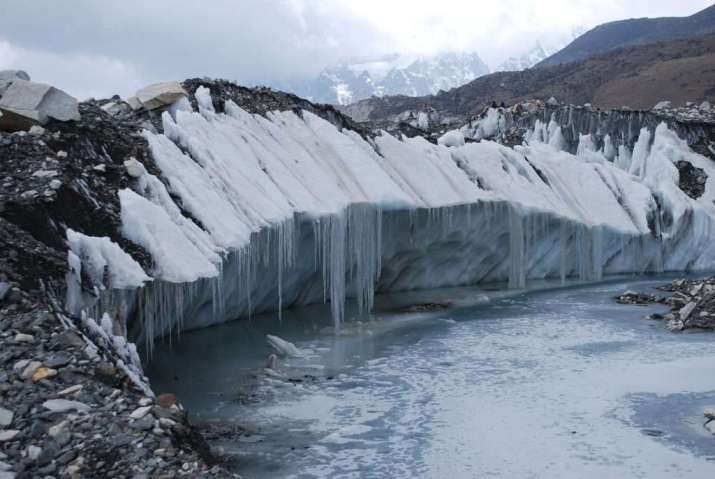
According to a new study, the glaciers of the Himalayan mountain rage are under serious threat from climate change. The report warns that at least a third of the ice will have melted by the end of the century, threatening the water supply of close to 2 billion people in the region.
Even if current efforts to reduce climate change have effect and carbon emissions are drastically cut, halting global warming at 1.5 degrees Celsius, 36 per cent of the glaciers along the Hindu Kush-Himalaya (HKH) mountain rage will have disappeared by 2100, the 600-page study warns. If efforts to limit climate change fail, the impact could be much worse; a global warming of 2 degrees Celsius could affect as much as two-thirds of the icefields.
“This is the climate crisis you haven’t heard of,” said Philippus Wester, who led the study. “In the best of possible worlds, if we get really ambitious [in tackling climate change], even then we will lose one-third of the glaciers and be in trouble. That for us was the shocking finding.” (The Guardian)
These shocking findings were published earlier this month in a ground-breaking study released by the International Centre for Integrated Mountain Development (ICIMOD), an intergovernmental organization focused on environmental and social change in the HKH region. The report, compiled by 200 researchers over a period of five years—with another 125 experts peer reviewing their work—looks not just at the percentage of glaciers that will melt, but also at the consequences, ranging from food and water security to air pollution and energy demand.
The HKH region is sometimes called the planet’s “third pole,” housing more glacial ice than anywhere outside the Artic and Antarctica. The glaciers function as the main water store for the 250 million people who live in the region, and experts estimate that another 1.65 billion rely on the great rivers, such as the Indus, Irrawaddy, Ganges, Mekong, and Yangtze, that flow from the glacier peaks into China, India, Pakistan, and other neighboring nations.
The glaciers fulfill the role of a buffer for these river systems, which are dependent rainfall during the monsoon, but rely on meltwater from the glaciers during summer or periods of drought, when there is much demand for water. A reduction of the glacial mass in the HKH region could have a serious impact on the people and nations so dependent on it. As Hamish Pritchard, a glaciologist at the British Antarctic Survey who was not part of the report notes: “Take the ice away and those people are exposed to serious water stress and the consequences of that are local, regional, and potentially global, in terms of conflict and migration.” (The Guardian)
The report predicts that the melting glaciers will increase river flows through to 2050 and 2060, increasing the risk of rivers and lakes bursting their banks, but that water levels will fall starting in the 2060s, potentially affecting farmers and communities dependent on the rivers for their water supply, not to mention the hydrodams that generate a large proportion of the region’s power supply.
Despite the size and the importance of the glacial ice of the HKH mountains, the region is often underrepresented in global climate change reports that tend to focus on other highly vulnerable regions such as Antarctica, the Artic, and low-lying island states or coastal nations. This new study, which was requested by Afghanistan, Bangladesh, Bhutan, China, India, Myanmar, Nepal, and Pakistan, the eight nations that call the mountains their home, changes that.
The size and diversity of the region makes it difficult to measure the exact impact of climate change—some glaciers in Afghanistan and Pakistan, for instance, are said to be stable or even growing in size probably due to increased cloud cover that shields them from the sun and a change in the wind flows—but the ICIMOD report shows that approximately 15 per cent of glacial ice in the HKH region has melted since the 1970s, and that even glaciers that are now stable will melt if urgent action is not taken.
References
Wester, P., Mishra, A., Mukherji, A. & Bhakta Shrestha, A. (eds.) 2019. The Hindu Kush Himalaya Assessment: Mountains, Climate Change, Sustainability and People. ICIMOD
See more
A third of Himalayan ice cap doomed, finds report (The Guardian)
One-Third Of Himalayan Glaciers Can No Longer Be Saved, New Study Warns (Huffington Post)











